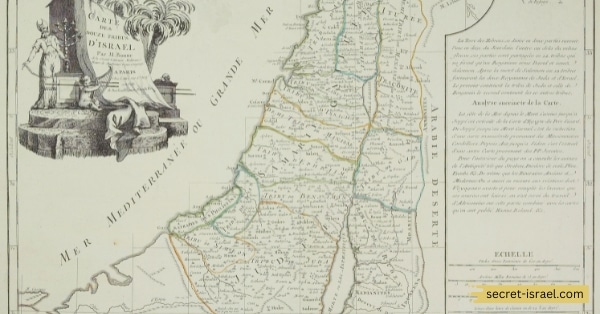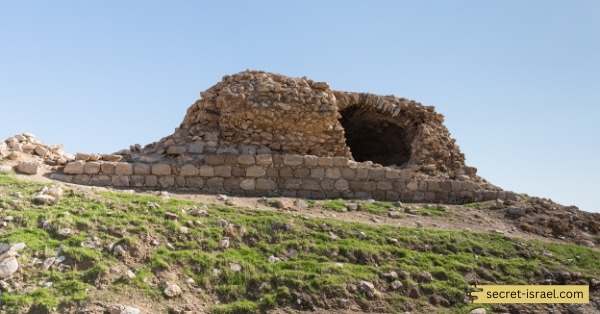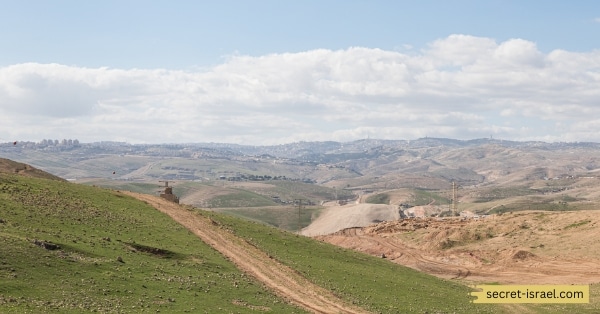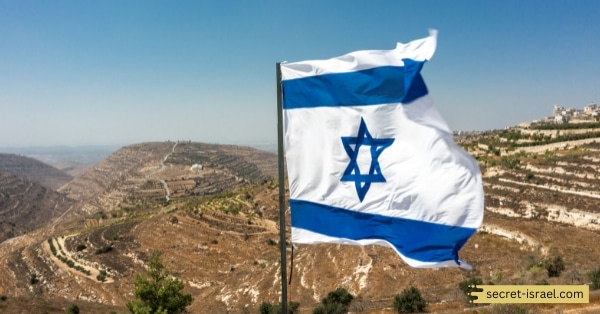Samaria was once the proud capital of the Northern Kingdom of Israel, and to this day it continues to captivate with its ancient architectural marvels, vibrant cultural heritage, and pivotal role in history. Located on a hilltop overlooking modern-day Nablus in the West Bank, Samaria has been inhabited since at least Iron Age II (1000 – 587 BC), and was one of the most important cities in the ancient Near East.
In this article, we will take a closer look at the history, significance, and legacy of Samaria. We will explore its role in ancient Israelite society, as well as its relevance to modern politics and culture. Get ready to dive into the fascinating story of Samaria!
The Founding of Samaria: A Historical Overview
Samaria, also known as Sebaste, holds a significant place in the annals of ancient history. It was established by King Omri of Israel around 880 BC as the capital of the Northern Kingdom of Israel. Omri purchased the hill of Samaria and constructed his royal city atop it, a strategic location with natural fortifications that provided a commanding view of the surrounding region.
The name ‘Samaria’ is believed to have been derived from Shemer, the original owner of the land. The city’s establishment marked a new era in the Northern Kingdom’s history, as it shifted the political and cultural center from Tirzah to Samaria.
Over time, the city grew in wealth and influence, becoming a key hub of power in the region. Its founding laid the foundation for the development of one of the most influential cities in ancient Israel, whose impact can still be traced in modern times.

Architectural Marvels of Samaria: The Capital of Northern Israel
Samaria, as the capital of the Northern Kingdom of Israel, was renowned for its stunning architecture. The city was built on a hilltop, providing natural fortification and a strategic vantage point. Its construction was an engineering feat, with terraced landscapes and intricate water systems.
The city’s grandeur was most evident in the royal palace, built by King Omri and later embellished by his son Ahab. The palace, known as Ivory House due to its lavish ivory decorations, was a symbol of opulence and power. It boasted of ornate carvings, luxurious furnishings, and complex architectural design.
Additionally, Samaria was home to monumental structures like the city gates and fortified walls. Archaeological excavations have also revealed the presence of impressive public buildings and private dwellings, reflecting the city’s prosperity. These architectural marvels not only showcase the advanced craftsmanship of that era but also offer insights into the social and political life of ancient Samaria.

Samaria and Its Role in the Northern Kingdom’s Political Landscape
Samaria’s establishment as the capital city of the Northern Kingdom of Israel was a turning point in the region’s political landscape. It became the epicenter of power, housing the royal palace and serving as the residence for the reigning monarchs. As such, it was the hub for significant state affairs, policy decisions, and legislative actions.
Strategically located on a hilltop, Samaria was a crucial stronghold, playing a vital role in the kingdom’s defense against potential invasions. The city’s prosperity also made it an essential economic center, influencing trade policies and financial dealings with neighboring regions.
In addition to its political and economic influence, Samaria was a significant cultural pivot. The city dictated trends and religious practices across the kingdom, with its temples and sanctuaries becoming central points for worship.

Daily Life and Culture in Ancient Samaria
In ancient Samaria, daily life was marked by a blend of simplicity and opulence. The city’s populace was mainly divided into the elite, including the royal family and nobles, and the commoners who were farmers, craftsmen, and traders. The elites lived in grand houses, often luxuriously decorated, while the commoners resided in simpler dwellings.
Agriculture played a significant role in everyday life, with the cultivation of grains, olives, and grapes being prevalent. Artisanal crafts such as pottery, ivory carving, and metalwork were also widespread, reflecting the city’s artistic flair.
Religion was central to Samarian culture, with worship primarily focused on Yahweh, the God of Israel. However, archaeological evidence suggests influences from neighboring cultures, indicating a degree of religious syncretism.
Festivals like the Feast of Tabernacles and Feast of Weeks brought the community together for feasting, music, and dance. Samaria’s strategic location attracted merchants and travelers, fostering cultural exchange and trade, resulting in a rich fusion of customs, languages, and goods.

The Fall of Samaria: The End of an Era in Northern Israel
The fall of Samaria signaled the end of an era in Northern Israel. In 722 B.C., after a three-year siege, the Assyrian empire under King Sargon II conquered Samaria. This conquest marked the culmination of the Assyrian’s systematic campaign to subjugate the Northern Kingdom of Israel.
The city’s fall had far-reaching consequences. The Assyrians deported the majority of Samaria’s population, replacing them with people from other conquered lands. This event, known as the Assyrian captivity, led to significant demographic and cultural shifts in the region.
Samaria’s fall also meant the end of the Northern Kingdom of Israel as an independent political entity. It was incorporated into the Assyrian provincial system, losing its distinct identity.
This marked a significant turning point in the history of the region, bringing an end to the era of Israelite rule in Samaria and paving the way for new cultural and political dynamics.

In conclusion
Samaria played a critical role as the capital city of the Northern Kingdom of Israel. Despite being controlled by dynasties that lacked legitimacy, the city continued to thrive and establish an identity of its own.
It served not only as a political and economic center, but also as a cultural hub and a religious site. The city’s downfall, following the Assyrian conquest, marked a turning point in the history of ancient Israel and reshaped the region as we know it today.
Samaria’s legacy lives on as a symbol of the region’s rich and complex history, reminding us of the intricate web of politics, religion, and culture that defined life in the ancient Near East.












